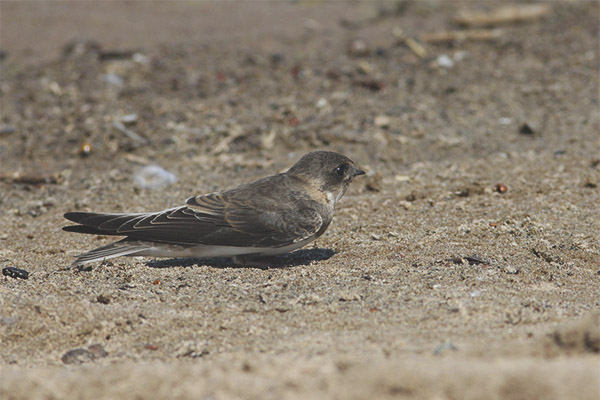The content of the article
Beregovushka is an interesting bird representative of the swallow family. It should be noted that this species has a number of peculiarities of behavior that are not characteristic of other members of the family, which significantly distinguishes them from a number of feathered relatives. At the same time, the beregovushki have a rather calm disposition, they are not aggressive and have a very rich life.
The appearance of the shores
Coastal swallows are the smallest birds in this family. The maximum length of their body reaches only 13 centimeters. In the wingspan of their size is 28 units. The mass of these tiny birds is only 16 grams. Color is quite modest. Their upper parts are covered with gray and brown plumage. But the area of the abdomen, and indeed the lower part of the body is covered with feathers of a dirty white color.These birds can be found along the brown strip across the breast.
The tail at the coast is small, has an average length and is rather narrow. These swallows have a short but very firm beak, with which they deftly dig underground holes. It is almost impossible to distinguish between a female and a male.
Cliffs and sandy cliffs become the habitat for the coastlines. It is here that birds build their nests, which are characterized by the presence of long tunnels. Beregovushki live mostly few colonies. Sometimes there are separately living couples.
A surprising feature of these birds is their excessive accuracy. The fact is that in the front, on the legs of the shorelines, you can see the peculiar brushes of feathers, with which they clean their nest inside, sweep the floor even in the corridor.
It is worth noting that coastlines are often in danger, since they are the target of many birds of prey, as well as animals, including foxes, badgers, falcons, weasels, ermines and other individuals. Moreover, this species of birds is not protected from epidemics that destroy birds, leaving only a small number of individuals out of many thousands of colonies, reaching up to several hundred.
Life in captivity
Nutrition
The basis of the ration of the coastal areas is made up of various spiders and other insects. Sometimes, in addition, they begin to use a variety of plants. Basically, the process of feeding at them takes place in flight, however, sometimes the banks on the ground hunt and feed.
Habitat areas
You can meet shore swallows in different parts of the world: in Africa, America, Europe and Asia. The fact is that coastlines are migratory birds that change their location depending on the season. At the time of nesting, they are in northern areas. After winter comes to them, the banks go to warmer areas.
Both during the nesting period and during their stay in the southern territories, the coastlines settle near the water bodies. The time at which the flight takes place may be different depending on where the birds live. For example, birds return to North America much earlier than to North Asia, and move to the south much later. Young individuals usually fly out earlier than the older generation, making small stops for rest on the way.
How is the nest arrangement?
The pair is jointly engaged in the arrangement of the nest.In just two days, two birds can dig a one meter long tunnel. However, beregovushki not know how to make turns of the tunnel and always dig only straight corridors. Therefore, sometimes they just throw the building halfway, because they meet a stone.
Video: swallow shoreline (Riparia riparia)












To send